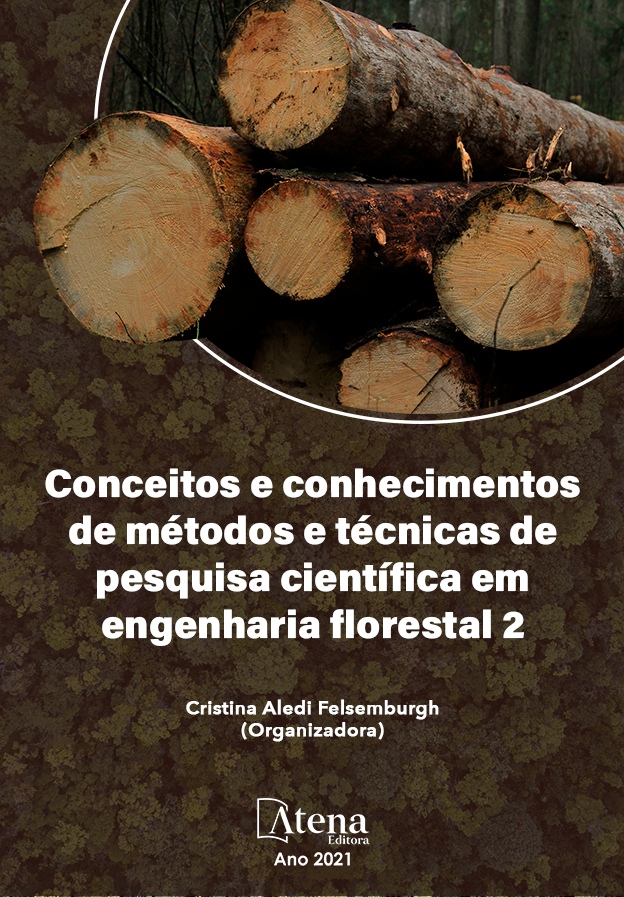
QUALIDADE FISIOLÓGICA, REPETIBILIDADE E DISSIMILARIDADE GENÉTICA PARA CARACTERÍSTICAS BIOMÉTRICAS DE SEMENTES DE Mimosa scabrella BENTH.
A espécie florestal Mimosa scabrella Benth., conhecida popularmente como bracatinga, pertence à família Fabaceae. O uso de sementes de qualidade é um fator determinante para o sucesso do empreendimento florestal, e a principal característica da qualidade a ser analisada é a capacidade germinativa das sementes. Assim o presente trabalho teve como objetivo avaliar a qualidade fisiológica de sementes de dez matrizes de M. scabrella, bem como avaliar o coeficiente de repetibilidade e a dissimilaridade genética em características biométricas das sementes. As sementes foram coletadas de uma população do município de Curitibanos, no mês de fevereiro de 2018. Foram realizadas análises como: peso de mil sementes (PMS), teor de água (TA), condutividade elétrica (CE) e teste de germinação (G) onde foram avaliados índice de velocidade de germinação (IVG) e comprimento de plântulas (CMP). Todas as análises estatísticas foram realizadas por meio do software GENES. Dentre as matrizes avaliadas por meio das análises de peso de mil sementes, teor de água, germinação, índice de velocidade de germinação, comprimento de plântula e condutividade elétrica, as matrizes 3 e 9 apresentaram menor qualidade fisiológica, sendo indicada a formação de um lote de sementes de com as matrizes 1, 2, 4, 5, 7 e 10. O coeficiente de repetibilidade foi alto para a característica diâmetro longitudinal da semente, intermediário para o peso da semente, e, baixo para diâmetro equatorial e espessura da semente. Para garantir 90% de determinação, é necessária a medição de 21 sementes, para compreensão de todas as características. Com base nas características biométricas avaliadas, indica-se o cruzamento entre as matrizes 4 e 7 por apresentarem maior dissimilaridade genética. Ainda, com base na distância de Mahalanobis foi possível formar dois grupos, demonstrando uma variabilidade restrita da população estudada.
QUALIDADE FISIOLÓGICA, REPETIBILIDADE E DISSIMILARIDADE GENÉTICA PARA CARACTERÍSTICAS BIOMÉTRICAS DE SEMENTES DE Mimosa scabrella BENTH.
-
DOI: https://doi.org/10.22533/at.ed.9412127071
-
Palavras-chave: Bracatinga, divergência genética, espécie florestal, biometria
-
Keywords: Bracatinga, genetic divergence; forest species, biometrics
-
Abstract:
The forest species Mimosa scabrella Benth, popularly known as bracatinga, belongs to the family Fabaceae. The use of quality seeds is a determinant factor for the success of the forest growth, one of the main characteristics of the germinative capacity of the seeds. Thus the present work had the objective of evaluating the physiological quality of seeds of ten matrices of M. scabrella, as well as to evaluate the repeatability coefficient and genetic dissimilarity in biometric characteristics of the seeds of the study population. The seeds were collected from a population of the municipality of Curitibanos, in the month of February, 2018. Analyzes were performed as: thousand seed weight (PMS), water content (TA), electrical conductivity (CE) and germination (G), where they were evaluated germination speed index (IVG) and seedling length (CMP). All statistical analyzes were performed using the GENES software. Among the matrices evaluated by means of the tests of thousand seed weight, water content, germination, germination speed index, seedling length and electrical conductivity 3 and 9 presented lower physiological quality, indicating the formation of a batch of seed of qualities of the matrices 1, 2, 4, 5, 7 and 10. The repeatability coefficient was high for the characteristic longitudinal diameter of the seed, intermediate for the weight of seed, and, down to equatorial diameter and seed thickness. To ensure 90% determination, it is necessary to measure 21 seeds, to understand all the characteristics. Based on the biometric characteristics evaluated, the crosses between matrices 4 and 7 are indicated because they present greater genetic dissimilarity. Also, based on the Mahalanobis distance, it was possible to form two groups, demonstrating a restricted variability of the studied population.
-
Número de páginas: 18
- Daniceli Barcelos
- Glauciana da Mata Ataíde
- Marcio Dias Pereira
- Andressa Vasconcelos Flores
- Paulo Cesar Flores Junior


